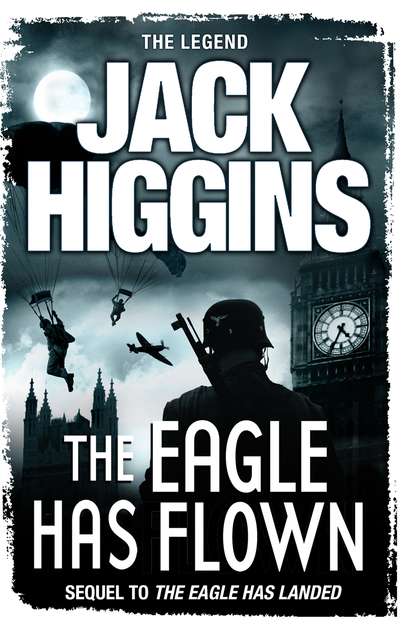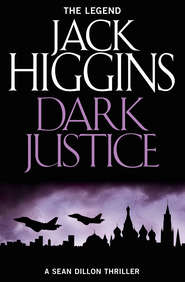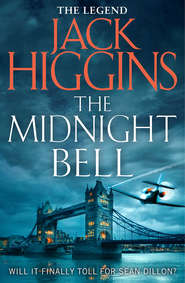По всем вопросам обращайтесь на: info@litportal.ru
(©) 2003-2025.
✖
The Eagle Has Flown
Автор
Год написания книги
2018
Настройки чтения
Размер шрифта
Высота строк
Поля
The Eagle Has Flown
Jack Higgins
The breathtaking sequel to the all-time classic, THE EAGLE HAS LANDED, reissued for a new generationThe greatest World War Two story of all time – is not over…By the end of 1943, all evidence of the abortive German attempt to assassinate Winston Churchill has been carefully buried in an unmarked grave in the Norfolk village of Studley Constable.But two of the most wanted ringleaders are still alive…In the fourth hard winter of war, British Intelligence pick up disturbing reports from Heinrich Himmler’s power base in Wewelsburg Castle. The mission is not yet accomplished. For the Fatherland, the Reichsfuhrer is demanding the Eagle’s return…
The Eagle Has Flown
For my motherHenrietta Higgins Bell
Contents
Title Page (#u51977f07-f1c8-5ddb-a217-d08606a0069c)
Dedication (#u66114da6-c527-56e2-93ee-81df8e2338c4)
Foreword
Preface
London Belfast 1975
1
Berlin Lisbon London 1943
2
3
4
5
6
7
8
9
10
11
12
13
14
15
Belfast 1975
16
About the Author
Also By Jack Higgins
Copyright
About the Publisher
FOREWORD (#u7ccd0126-16b1-56dc-a3b3-125870eb7d0b)
For years fans of my work in thousands of letters begged me to write a sequel to The Eagle Has Landed because of the enduring popularity of that book and particularly because of the enormous affection they all seem to have for Liam Devlin, the rogue Irishman in the IRA who was involved in the Churchill plot. Of course the real problem was that Steiner, the gallant German paratroop Colonel, had been shot dead at the end of the original story. I was visiting the Tower of London by chance and was shown where Rudolf Hess had been held prisoner, and I was surprised to learn that other German prisoners had been held there. All I knew at that point was that I would like to write about a prisoner in the Tower, but who would he be? The answer was like a bolt from the blue. Steiner hadn’t died. He had survived surgery, was imprisoned in the Tower, and they wanted him back in Berlin. And who better to take on the job than Liam Devlin. The fact that this would be my fiftieth novel made it a special occasion, and so the Eagle flew again.
Jack Higgins
June 1996
PREFACE (#u7ccd0126-16b1-56dc-a3b3-125870eb7d0b)
At one o’clock in the morning of Saturday, November 6, 1943, Heinrich Himmler, Reichsführer of the SS and Chief of State Police received a simple message: The Eagle has Landed. It meant that a small force of German paratroopers under the command of Oberstleutnant Kurt Steiner, aided by IRA gunman, Liam Devlin, were at that moment safely in England and poised to snatch the British Prime Minister, Winston Churchill, from the Norfolk country house where he was spending a quiet weekend near the sea. By the end of the day, thanks to a bloody confrontation in the village of Studley Constable between American Rangers and the Germans, the mission was a failure, Liam Devlin apparently the only survivor. As for Kurt Steiner …
LONDON • BELFAST (#u7ccd0126-16b1-56dc-a3b3-125870eb7d0b)
1 (#u7ccd0126-16b1-56dc-a3b3-125870eb7d0b)
There was an Angel of Death on top of an ornate mausoleum in one corner, arms extended. I remember that well because someone was practising the organ and light drifted across the churchyard in coloured bands through stained-glass windows. The church wasn’t particularly old, built on a high tide of Victorian prosperity like the tall houses surrounding it. St Martin’s Square. A good address once. Now, just a shabby backwater in Belsize Park, but a nice, quiet area where a woman alone might walk down to the corner shop at midnight in safety and people minded their own business.
The flat at number thirteen was on the ground floor. My agent had borrowed it for me from a cousin who had gone to New York for six months. It was old-fashioned and comfortable and suited me fine. I was on the downhill slope of a new novel and needed to visit the Reading Room at the British Museum most days.
But that November evening, the evening it all started, it was raining heavily and just after six I passed through the iron gates and followed the path through the forest of Gothic monuments and gravestones. In spite of my umbrella the shoulders of my trenchcoat were soaked, not that it bothered me. I’ve always liked the rain, the city at night, wet streets stretching into winter darkness, a peculiar feeling of freedom that it contains. And things had gone well that day with the work, the end was very definitely in sight.
The Angel of Death was closer now, shadowed in the half-light from the church, the two marble attendants on guard at the mausoleum’s bronze doors, everything as usual except that tonight, I could have sworn that there was a third figure and that it moved out of the darkness towards me.
For a moment I knew genuine fear and then, as it came into the light, I saw a young woman, quite small and wearing a black beret and soaked raincoat. She had a briefcase in one hand. The face was pale, the eyes dark and somehow anxious.
‘Mr Higgins? You are Jack Higgins, aren’t you?’
She was American, that much was obvious. I took a deep breath to steady my nerves. ‘That’s right. What can I do for you?’
‘I must talk to you, Mr Higgins. Is there somewhere we could go?’
I hesitated, reluctant for all sorts of obvious reasons to take this any further and yet there was something quite out of the ordinary about her. Something not to be resisted.
I said, ‘My flat’s just over the square there.’
Jack Higgins
The breathtaking sequel to the all-time classic, THE EAGLE HAS LANDED, reissued for a new generationThe greatest World War Two story of all time – is not over…By the end of 1943, all evidence of the abortive German attempt to assassinate Winston Churchill has been carefully buried in an unmarked grave in the Norfolk village of Studley Constable.But two of the most wanted ringleaders are still alive…In the fourth hard winter of war, British Intelligence pick up disturbing reports from Heinrich Himmler’s power base in Wewelsburg Castle. The mission is not yet accomplished. For the Fatherland, the Reichsfuhrer is demanding the Eagle’s return…
The Eagle Has Flown
For my motherHenrietta Higgins Bell
Contents
Title Page (#u51977f07-f1c8-5ddb-a217-d08606a0069c)
Dedication (#u66114da6-c527-56e2-93ee-81df8e2338c4)
Foreword
Preface
London Belfast 1975
1
Berlin Lisbon London 1943
2
3
4
5
6
7
8
9
10
11
12
13
14
15
Belfast 1975
16
About the Author
Also By Jack Higgins
Copyright
About the Publisher
FOREWORD (#u7ccd0126-16b1-56dc-a3b3-125870eb7d0b)
For years fans of my work in thousands of letters begged me to write a sequel to The Eagle Has Landed because of the enduring popularity of that book and particularly because of the enormous affection they all seem to have for Liam Devlin, the rogue Irishman in the IRA who was involved in the Churchill plot. Of course the real problem was that Steiner, the gallant German paratroop Colonel, had been shot dead at the end of the original story. I was visiting the Tower of London by chance and was shown where Rudolf Hess had been held prisoner, and I was surprised to learn that other German prisoners had been held there. All I knew at that point was that I would like to write about a prisoner in the Tower, but who would he be? The answer was like a bolt from the blue. Steiner hadn’t died. He had survived surgery, was imprisoned in the Tower, and they wanted him back in Berlin. And who better to take on the job than Liam Devlin. The fact that this would be my fiftieth novel made it a special occasion, and so the Eagle flew again.
Jack Higgins
June 1996
PREFACE (#u7ccd0126-16b1-56dc-a3b3-125870eb7d0b)
At one o’clock in the morning of Saturday, November 6, 1943, Heinrich Himmler, Reichsführer of the SS and Chief of State Police received a simple message: The Eagle has Landed. It meant that a small force of German paratroopers under the command of Oberstleutnant Kurt Steiner, aided by IRA gunman, Liam Devlin, were at that moment safely in England and poised to snatch the British Prime Minister, Winston Churchill, from the Norfolk country house where he was spending a quiet weekend near the sea. By the end of the day, thanks to a bloody confrontation in the village of Studley Constable between American Rangers and the Germans, the mission was a failure, Liam Devlin apparently the only survivor. As for Kurt Steiner …
LONDON • BELFAST (#u7ccd0126-16b1-56dc-a3b3-125870eb7d0b)
1 (#u7ccd0126-16b1-56dc-a3b3-125870eb7d0b)
There was an Angel of Death on top of an ornate mausoleum in one corner, arms extended. I remember that well because someone was practising the organ and light drifted across the churchyard in coloured bands through stained-glass windows. The church wasn’t particularly old, built on a high tide of Victorian prosperity like the tall houses surrounding it. St Martin’s Square. A good address once. Now, just a shabby backwater in Belsize Park, but a nice, quiet area where a woman alone might walk down to the corner shop at midnight in safety and people minded their own business.
The flat at number thirteen was on the ground floor. My agent had borrowed it for me from a cousin who had gone to New York for six months. It was old-fashioned and comfortable and suited me fine. I was on the downhill slope of a new novel and needed to visit the Reading Room at the British Museum most days.
But that November evening, the evening it all started, it was raining heavily and just after six I passed through the iron gates and followed the path through the forest of Gothic monuments and gravestones. In spite of my umbrella the shoulders of my trenchcoat were soaked, not that it bothered me. I’ve always liked the rain, the city at night, wet streets stretching into winter darkness, a peculiar feeling of freedom that it contains. And things had gone well that day with the work, the end was very definitely in sight.
The Angel of Death was closer now, shadowed in the half-light from the church, the two marble attendants on guard at the mausoleum’s bronze doors, everything as usual except that tonight, I could have sworn that there was a third figure and that it moved out of the darkness towards me.
For a moment I knew genuine fear and then, as it came into the light, I saw a young woman, quite small and wearing a black beret and soaked raincoat. She had a briefcase in one hand. The face was pale, the eyes dark and somehow anxious.
‘Mr Higgins? You are Jack Higgins, aren’t you?’
She was American, that much was obvious. I took a deep breath to steady my nerves. ‘That’s right. What can I do for you?’
‘I must talk to you, Mr Higgins. Is there somewhere we could go?’
I hesitated, reluctant for all sorts of obvious reasons to take this any further and yet there was something quite out of the ordinary about her. Something not to be resisted.
I said, ‘My flat’s just over the square there.’











